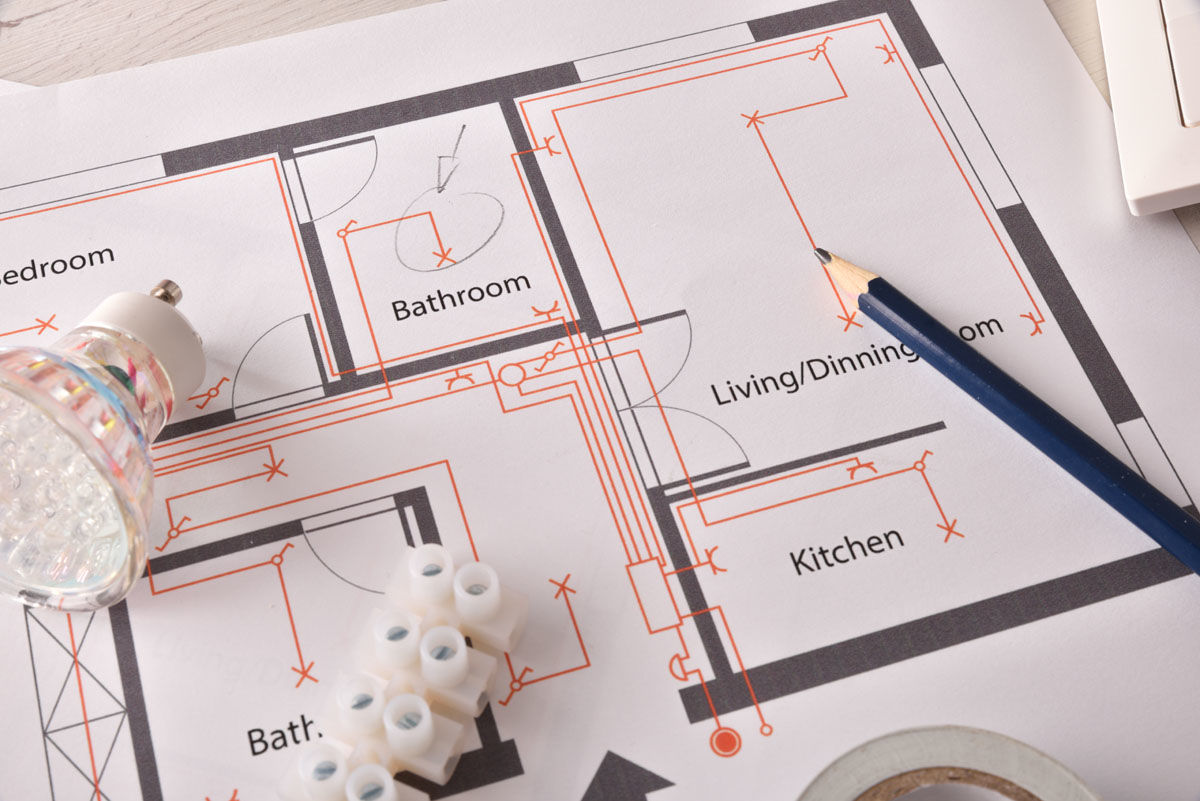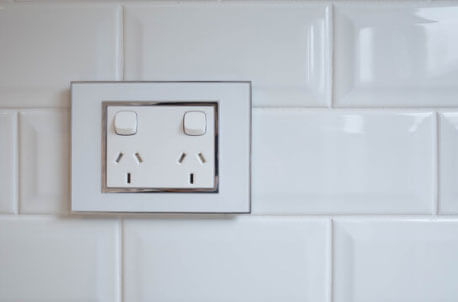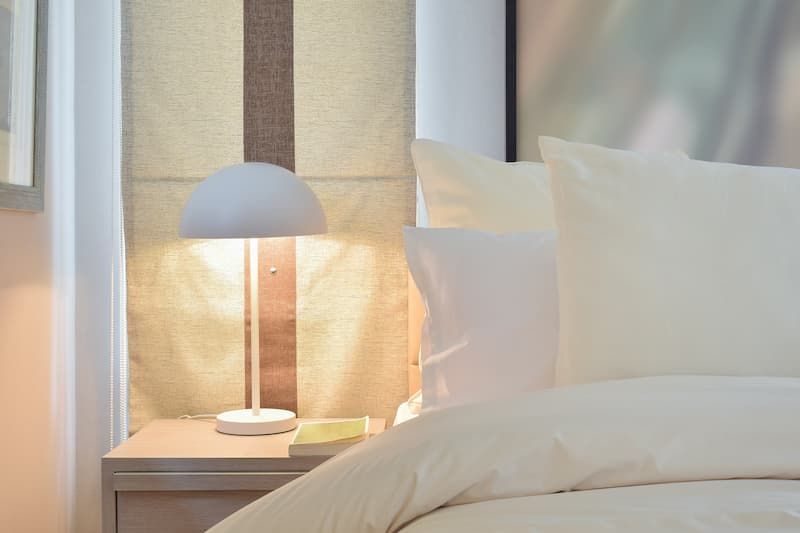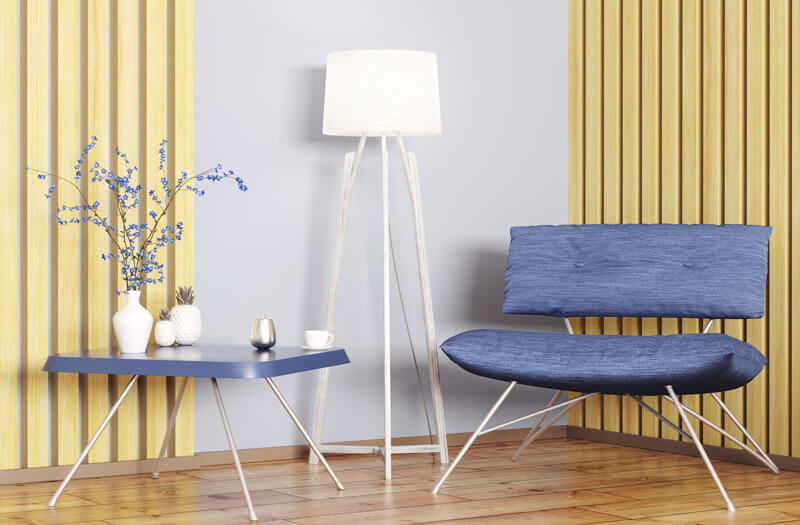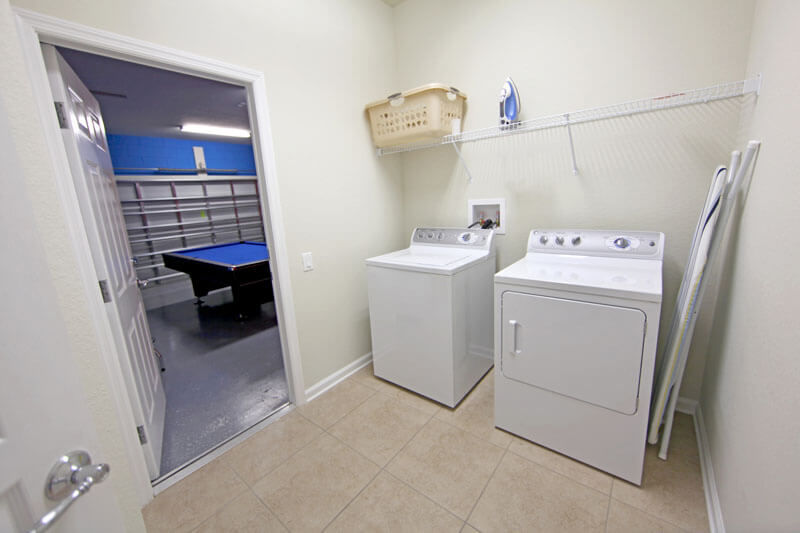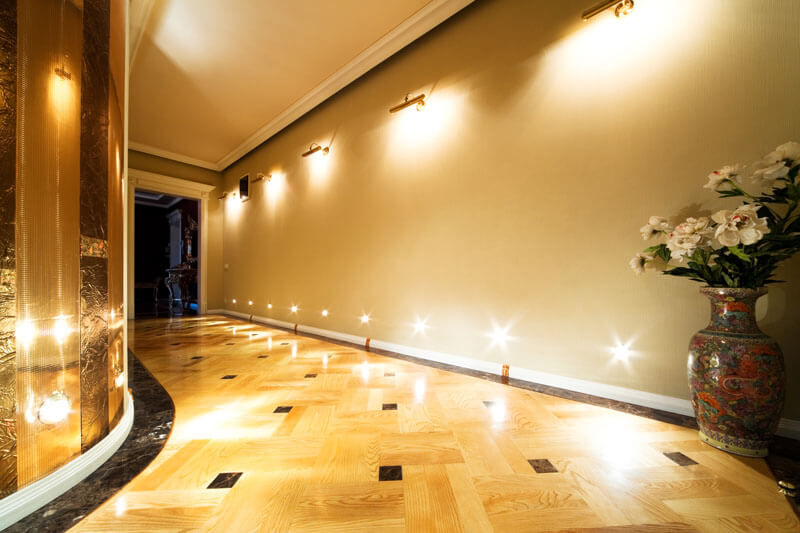Building a new home is so exciting! Whether you are planning to start a new family or finally building the home of your dreams, creating a well thought out and thorough electrical plan for your new home is an extremely important part of the process.
It’s easy to take electricity for granted; you walk into a room and turn on the light switch. Need to plug in a TV? Use the power point on the wall. Have a phone that needs recharging? Plug it into a USB port.
There are some major differences between a home with a well organised electrical plan vs one without. Have you ever walked into a room expecting the light switch to be on a certain side of the wall and maybe even placed at a certain height? You can feel it when you’re in a home with a poor electrical plan.
Download Our Interactive New Home Construction Electrical Plan Checklist
Common issues are:
- Not enough power points
- Power points installed in odd / difficult to reach places
- Not enough lights / poorly lit rooms and hallways
To prevent this situation from occurring in your new home, you should work with your builder and electrician to create a comprehensive electrical plan. The more detailed the better.
Prepare for an Electrical Walk-Through of Your New Home
If possible, try to organise a day and time to do a walkthrough of your home after framing is complete. Before the walk-though, make a copy of your new home floorplan and start to think about where you want various electrical features to be placed. Make notes on the floorplan so you are prepared on the day of the walk-through.
Bring a notebook or iPad and make notes for each room.
As you walk through your unfinished home, imagine what it will look like when you are ready to move in. Be sure to take your time and be thorough. Work through the checklist for each room and make sure you are satisfied that the electrician and builder knows exactly what you want. | 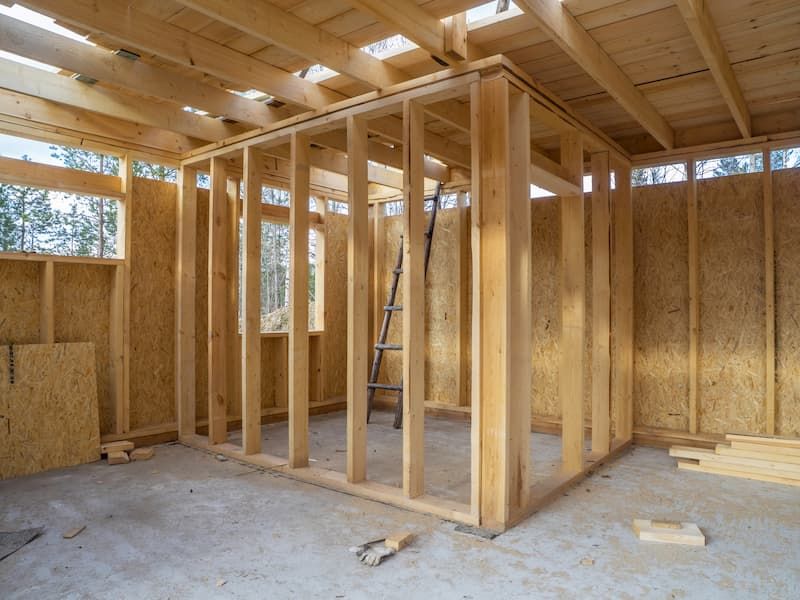 |
Coming Up With A Basic Lighting Plan
Ask yourself:
|
|
Power Points – how many in each room and where should they go?
Kitchen
A good power point plan is essential for kitchens. Make sure to plan out where your counter-top appliances will be placed. It’s always a good idea to have at least 2 power points on each wall where there will be counter space.
Are you going to have some dedicated counter top appliances such as an espresso machine, microwave oven, or food processor? Think about where you want those types of appliances to be and make sure you plan to install enough easily accessible power points to run them all without having to use extension cords or power boards. | |
If you have a bar or island bench, consider installing power points below the counter. Even better – install power points with USB ports. This comes in handy for powering and charging laptops and other electronic devices.
Of course, your refrigerator will need a standard power point and depending on the type of oven you get, you’ll need a power point for that as well.
| | Bedrooms
Imagine where your bed will be in the Master bedroom. Do you have a king or queen size bed? Get the dimensions of your bed if possible and once you decide where it will be in your room, think about putting a power point on each side of the bed. This way you and your partner can each have a power point for lamps, laptops, etc… Also consider getting a power point with a USB port to make charging your phone easier. Make sure you have at least 2 sockets in each power point – if possible, try to get a power point with 4 sockets installed. We all know more power sockets is better than not enough! If you can avoid having to use a power board, all the better. |
Will the Master bedroom have a TV? Figure out where the TV will be placed and also whether it will be wall mounted or sit on a table. If the TV will be wall-mounted, you will want to get a power point installed that is behind the TV. This will prevent cables from being visible behind the TV. If the TV is going to be on a table, you can also have a power point installed so it is placed higher up on the wall behind the TV. You can also put the power point down closer to the floor.
Is there going to be a vanity in the Master bedroom? If yes, you will want a power point installed near where the vanity mirror will be.
Depending on the size of the Master bedroom closet people sometimes find a power point in the closet to be helpful.
In children’s bedrooms and guest rooms, think about where the bed(s) will be placed and make sure there is a power point next to the bed. Again, look at getting a power point with a USB port to make phone charging as easy as possible.
Generally one more power point is all that is necessary in most children’s and guest bedrooms.
Bathroom
In the bathroom you will want at least one power point installed near the sink – just make sure it’s not too close! If you have 2 sinks in the bathroom you could have one power point between the 2 sinks, or one for each.
Something a bit different is to think about getting a power point installed in one of the top drawers of the vanity. This makes it easier (and safer) to use hairdryers, electric shavers, etc… near the sink. You can store those appliances in the same drawer as the power point and leave them plugged in for quick, easy access and use.
Consider getting a power point(s) installed that has a USB port to make charging your phone and other portable devices easy. | 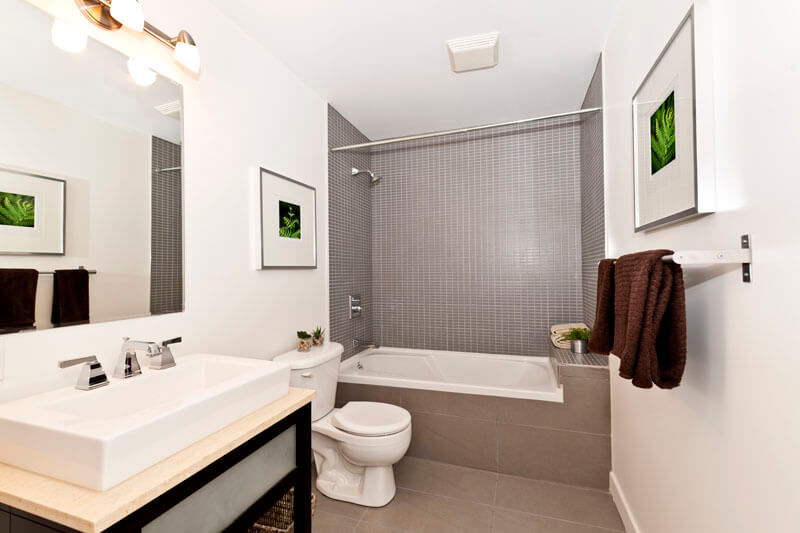 |
| | Living Room
The living room is usually the centre for entertainment in the home. Think about where your TV will go. Do you have a multi-media system (TV, stereo, components, etc…). If the TV will be wall-mounted, you will want to get a power point installed that is behind the TV. This will prevent cables from being visible behind the TV. If the TV is going to be on a table, you can also have a power point installed so it is placed higher up on the wall behind the TV.
If you have a multi-media set-up it’s a good idea to get 2 more power points (in addition to the one behind the TV) down near the floor. This way you will definitely have enough power for all the components of your system. |
Try to imagine where your couch will sit and be sure to place power points on either side of the couch as well. This ensures you have enough power for lamps and other electronics. Again, a power point with USB port is a great way to make charging phones easy and convenient.
It’s also a good idea to have an extra power point in the living room somewhere. This just ensures you have enough in case you decide to rearrange things a bit.
Office / Study
Identify where you will place your desk(s) and install at least one power point on the wall in a spot that will be easily reached. If possible, get a power point with 4 sockets and a USB port to ensure you have enough power for all your office equipment and devices.
| | Garage
It’s always a good idea to have at least 2 power points on each wall of the garage. Try to space them out a bit here so it is easy to power tools at every point in the garage.
Do you plan on having a work bench in the garage? Install a row of power points under the work bench. You’ll also want at least one power point on the wall above the work bench so you can plugin a stereo or TV. |
Laundry
Obviously you’ll need a power point placed near your washer / unit(s). It’s always a good idea to have at least one more power point on the wall next to the sink – not above the sink, next to it!
Hallways
It’s a good idea to have at least one power point installed near the floor and about half way down each of your hallways. NBN & Phone
If possible, try to have your office built so it shares a wall with the living room. Have the NBN box installed behind where your desk will be and near the power point(s) in the office so that it’s not an eyesore in your living room. Since the router will be very near your living room there will be no dramas in getting the wi-fi signal to reach your TV.
If you have a large home, you will need to think about getting a wi-fi extenders placed here and there so the signal is able to reach every corner of your home. | |
Most new homes don’t need a landline, but there are still some internet providers that require a landline be installed for service. Also, landline placement is important to consider for people with medical devices that must always be connected to power and / or the internet. The best place to have your landline sockets placed is in the office and / or kitchen.
Heating & Cooling
Since you are building a new home, it’s likely that you have planned out what type of heating / cooling system you will have installed. If not, you should get this sorted ASAP.
Are you going to have a ducted AC system or use wall-mounted units? If you are going with a ducted system, no worries – the AC professional will sort out how to install that throughout the home.
Wall-mounted AC systems require a bit of planning. Decide which rooms you want a system to be installed and where in those rooms you want the units to be placed. You’ll also need to have room outside on the ground for the external parts for each unit. |  |
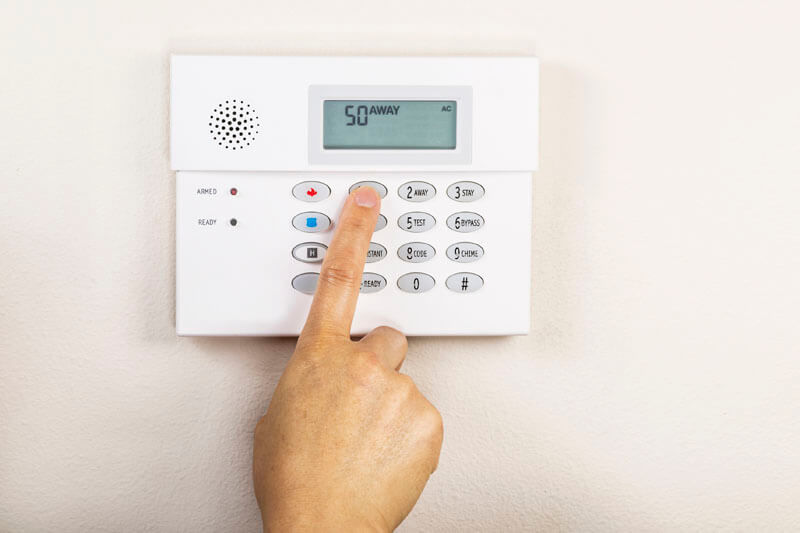 | Home Security System
Are you going to install a home security system? Will it be an external system, internal or both?
For external security systems, think about where you want motion activated security lights. Where should cameras go? For inside the home, do you want an intruder alarm system that is set when you leave and / or at night? You’ll want to designate a space near the front door for the keypad.
If you decide you want cameras in the home as well, decide where these will be placed. These are most often placed on both ends of hallways, one in the living room and potentially one in the office / study. |
Smart Home
If you wish to control the various lights, power points, appliances, electronic devices, security system, etc… in one central location then you may want consider all that we discussed above be installed as a smart home system.
By connecting all these systems to a smart home system you can run all electrical aspects of your home from your phone, tablet or computer.
It’s easier to seamlessly integrate a smart home system into a home as it is being built. To do so requires careful planning and forethought. It’s not impossible to modify existing homes so they become smart homes, it just requires a bit more work and resources. |  |
If you are building a new home or renovating an existing home, please get in touch with the professional electricians at Amber Electrical Services to find out how help create the perfect electrical plan. We’ll help make sure everything is thought through and the plan is executed on time and in budget!

